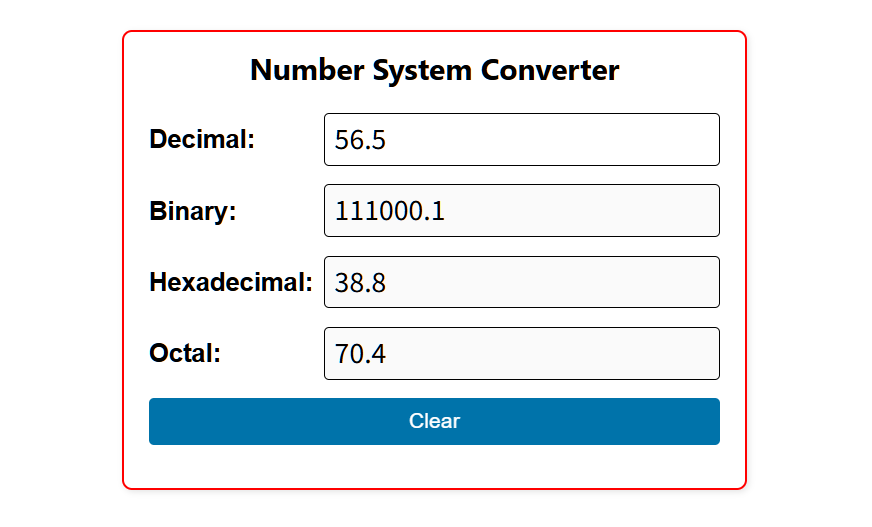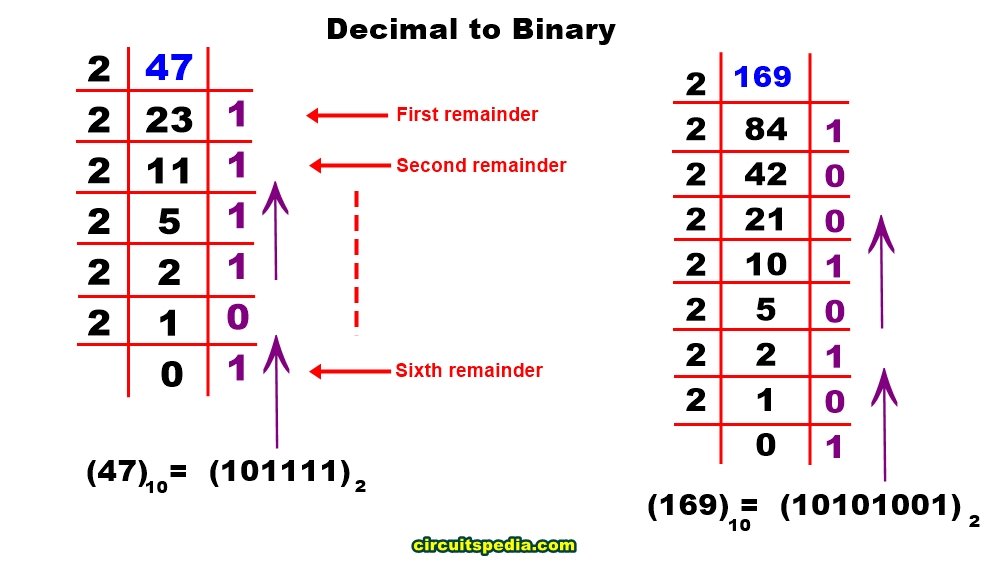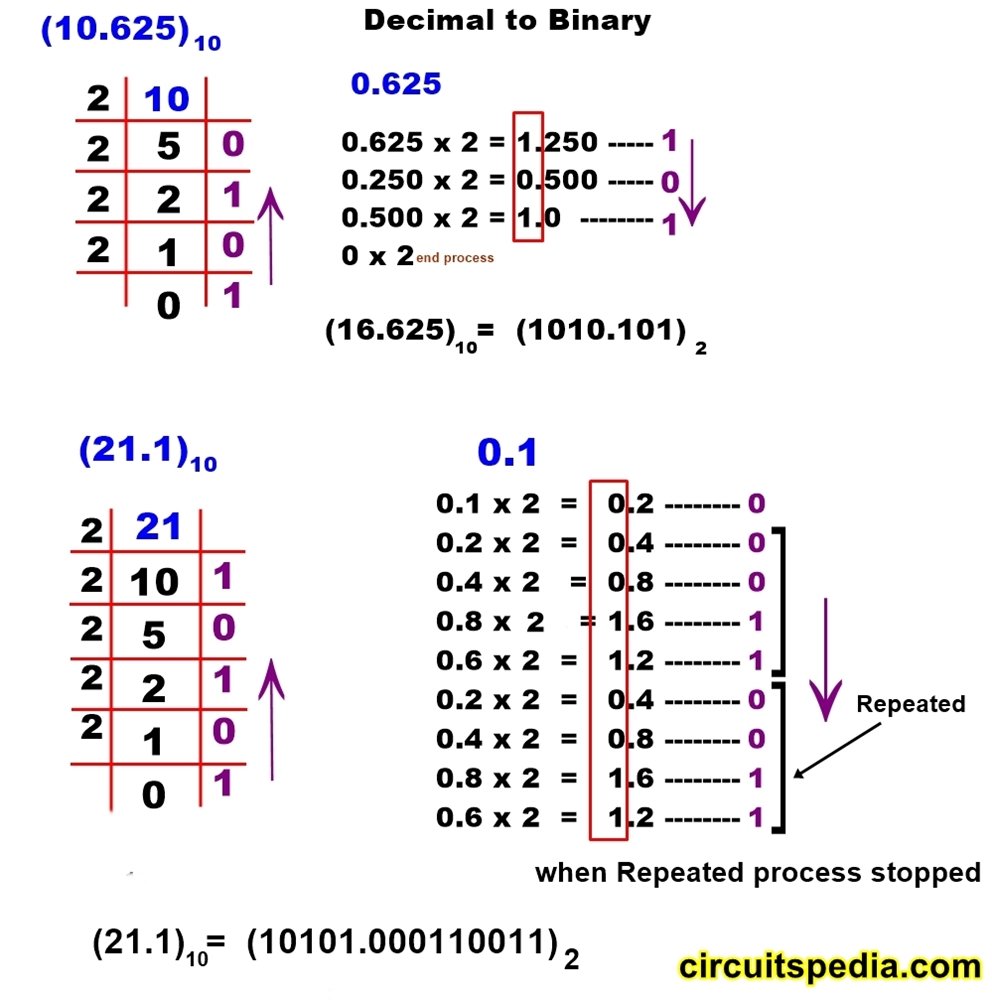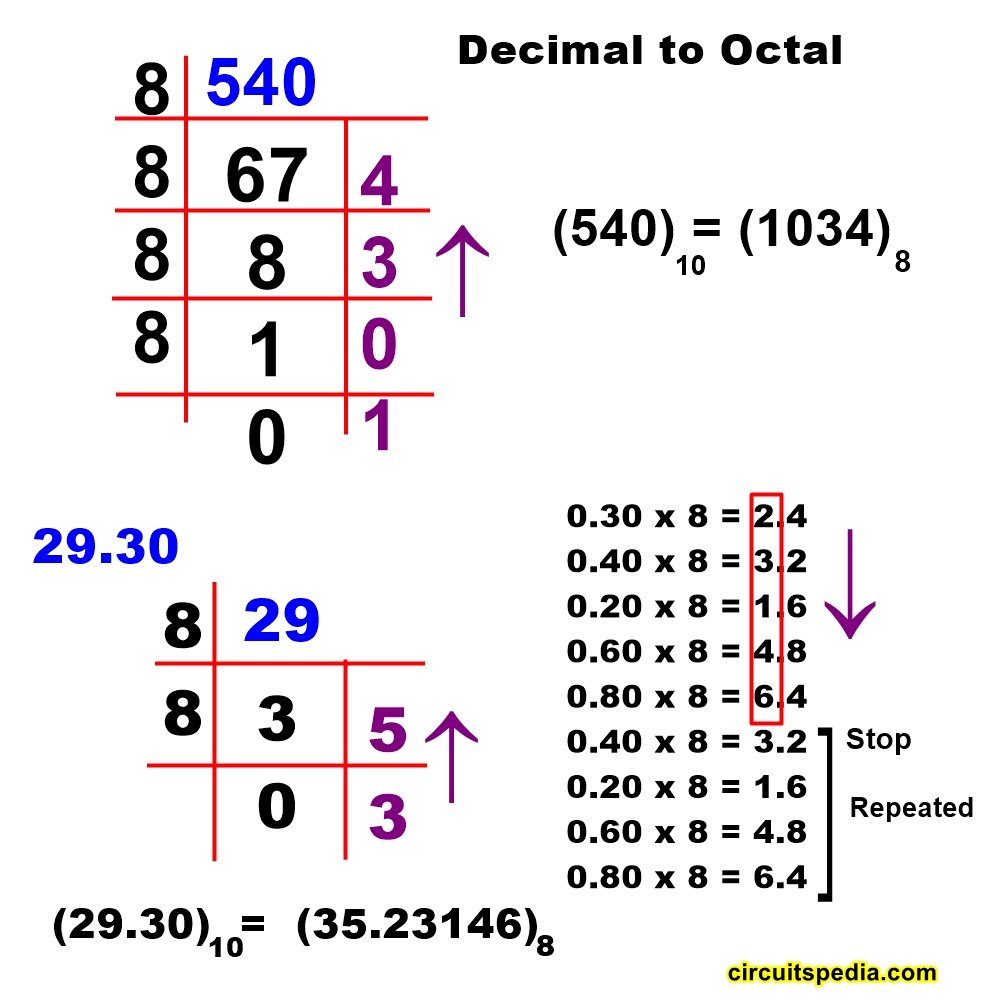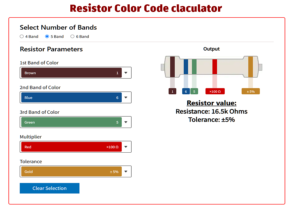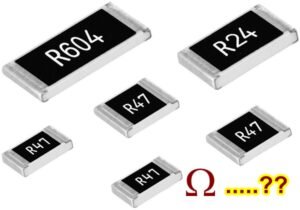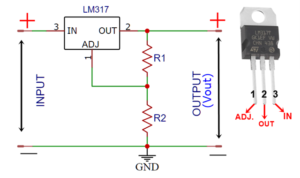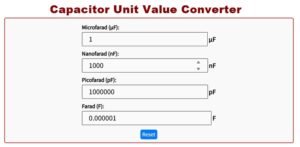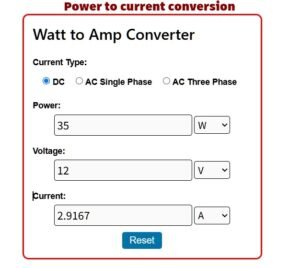Online Number Converter
Number System Converter
Also try- 555 timer calculator (Astable and Monostable)
The number system conversion calculator tool allows the user to enter a number in any system and convert it to the others.
A number system is a mathematical framework used to represent and express numbers using specific symbols or digits in a structured manner. Each number system follows a set of rules that define how numbers are written and interpreted. Number systems are essential for performing mathematical operations such as addition, subtraction, multiplication, and division.
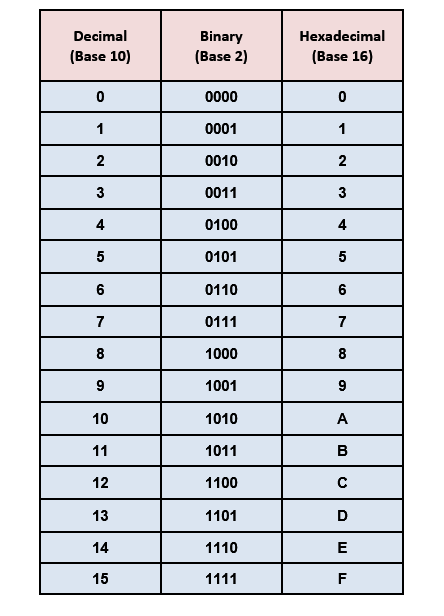
Types of Number Systems
Number systems are classified based on their base values. The four most commonly used number systems are:
- Binary Number System (Base-2)
- Octal Number System (Base-8)
- Decimal Number System (Base-10)
- Hexadecimal Number System (Base-16)
Decimal to Binary Converter
To convert a decimal number into binary, follow these steps:
For the Integer Part:
- Divide the integer by 2.
- Record the remainder.
- Repeat the process with the quotient until it becomes zero.
- The binary equivalent is the reversed order of remainders.
For the Fractional Part:
- Multiply the decimal fraction by 2.
- Record the integer part.
- Repeat the process with the remaining decimal part until it becomes zero or reaches the desired precision.
- The binary equivalent is read in the same order.
How to Convert 10.625 (Decimal) to Binary (Base-2)
To convert 10.625 (decimal) to binary, we need to separately convert the integer part (10) and the fractional part (0.625).
Step 1: Convert the Integer Part (10) to Binary
We repeatedly divide by 2 and record the quotients and remainders.
Binary equivalent of 10 (reading remainders from bottom to top) → 1010₂
Step 2: Convert the Fractional Part (0.625) to Binary
We repeatedly multiply by 2 and record the integer part.
Binary equivalent of 0.625 → .101₂
Step 3: Combine Both Parts
Now, we combine the integer and fractional binary results:
10.62510=1010.1012
Final Answer: 10.625 (decimal) = 1010.101 (binary)
Decimal to Octal Converter
Octal to binary conversion
As we know 8 = (2)3
So, each digit in the octal number system will be replaced by its equivalent binary using three bits. Hence direct conversion of octal to binary is possible.
(12.5)8 = (001010.101)2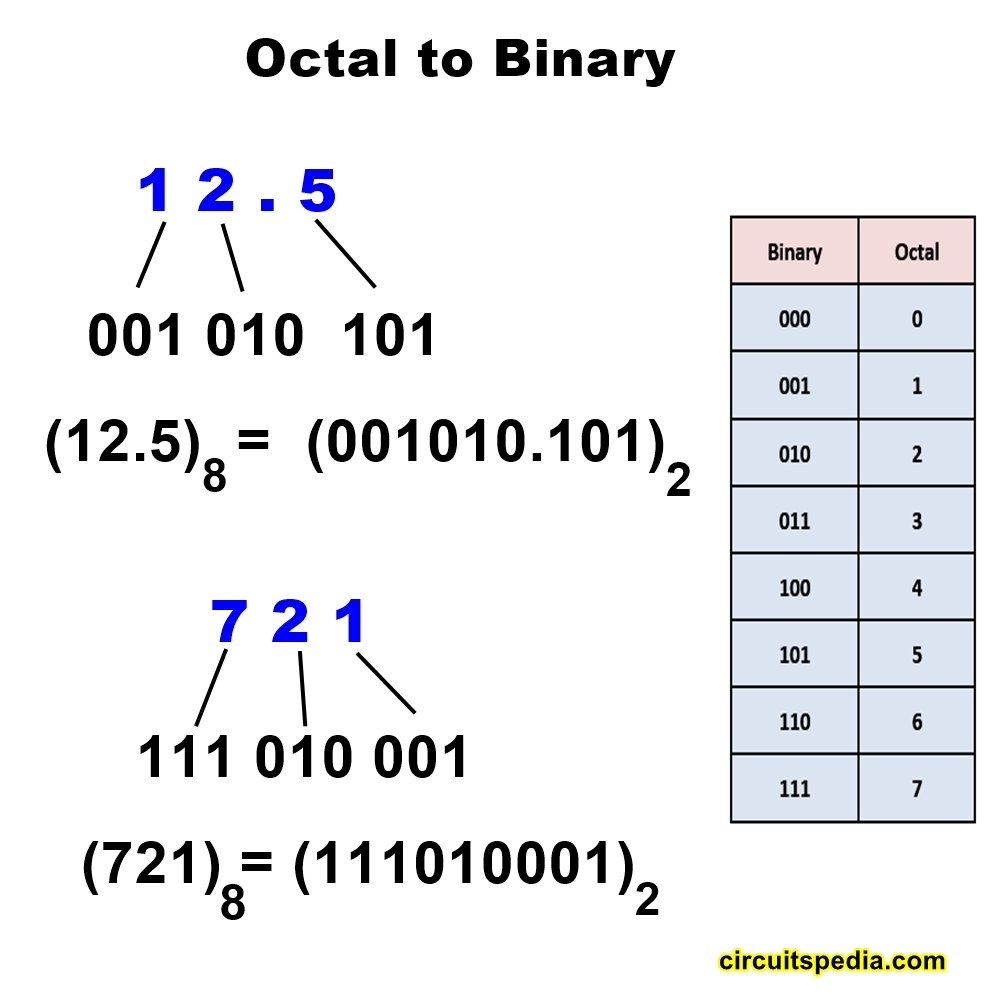
Binary to octal conversion
For binary to octal conversion, we will form a group of three bits starting from the origin, and then we will write the decimal equivalent of each group.
(001010.101)2 = (12.5)8
Decimal number
The numbers are represented or expressed with base 10 in the decimal number system. In this system, 10 digits (0 – 9) are used to represent a number. This is also called the base-10 number system. Each digit has a value in a decimal number according to its value, this is called place value. The place value increased 10 times the position of the umber when moving right to left. For more click here
Hexadecimal number
A hexadecimal number is also called a base-16 number or sometimes called Hex. This is the combination of Hexa (6) and decimal (10). A hexadecimal number is a numbering technique to represent any number in the form of base 16. in The hexadecimal system uses 0-9 and then uses A to F There are only 16 symbols or digits used to represent the hexadecimal number. These 16 symbols and digits are 0, 1, 2, 3, 4, 5, 6, 7, 8, 9, A, B, C, D, E, F. A is equal to 10, B is equal to 11, and so on till F is equal to 16.
The hexadecimal number system is used to represent large-value binary numbers. The hex number is much easier to read or express than binary and decimal. For more details Click here
More Tools
- Low Pass Filter Calculator
- SMD resistor code calculator
- Voltage Divider calculator
- Capacitor Code to value and value to code converter

